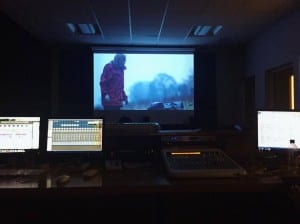A movie score is often used to create a emotion link between the audience and the movie itself. Score is often used in motion pictures to guide an audiences emotions due how evoking music can be, a scene can be ruined without the right feeling music being played for it. An example of this would in the scene ‘A journey in the dark’ from the film Lord of the Rings: The Fellowship of the Ring the Moria theme begins to play which unnerves the audience, the scene itself is unnerving as most human beings have an natural fear of the dark but with how it is being portrayed on screen adding the Moria theme creates a more nervous atmosphere for the audience. The Moria theme was constructed from Polynesian, and Maori choirs after recording Howard Shore augmented what been recorded by layering rugby players voices with the choir to make more intimidating. Due to it being in a mine Peter Jackson wanted the score to sound quite masculine and similar to a welsh mining choir. In contrast to this the scene known as the Shire in the same film the score known as bag end sets up a warm atmosphere for the audience.
This research will help me achieve my second learning outcome.
